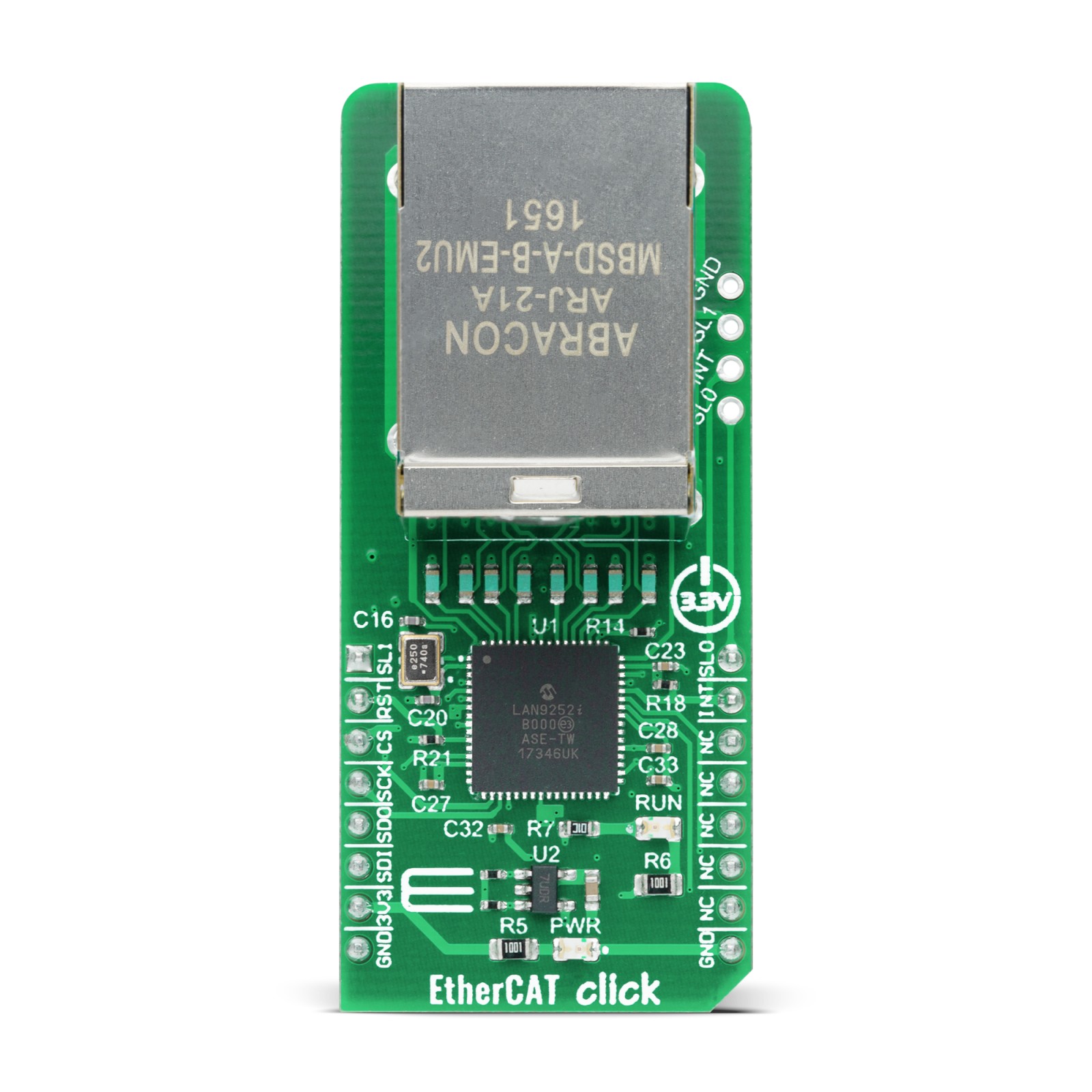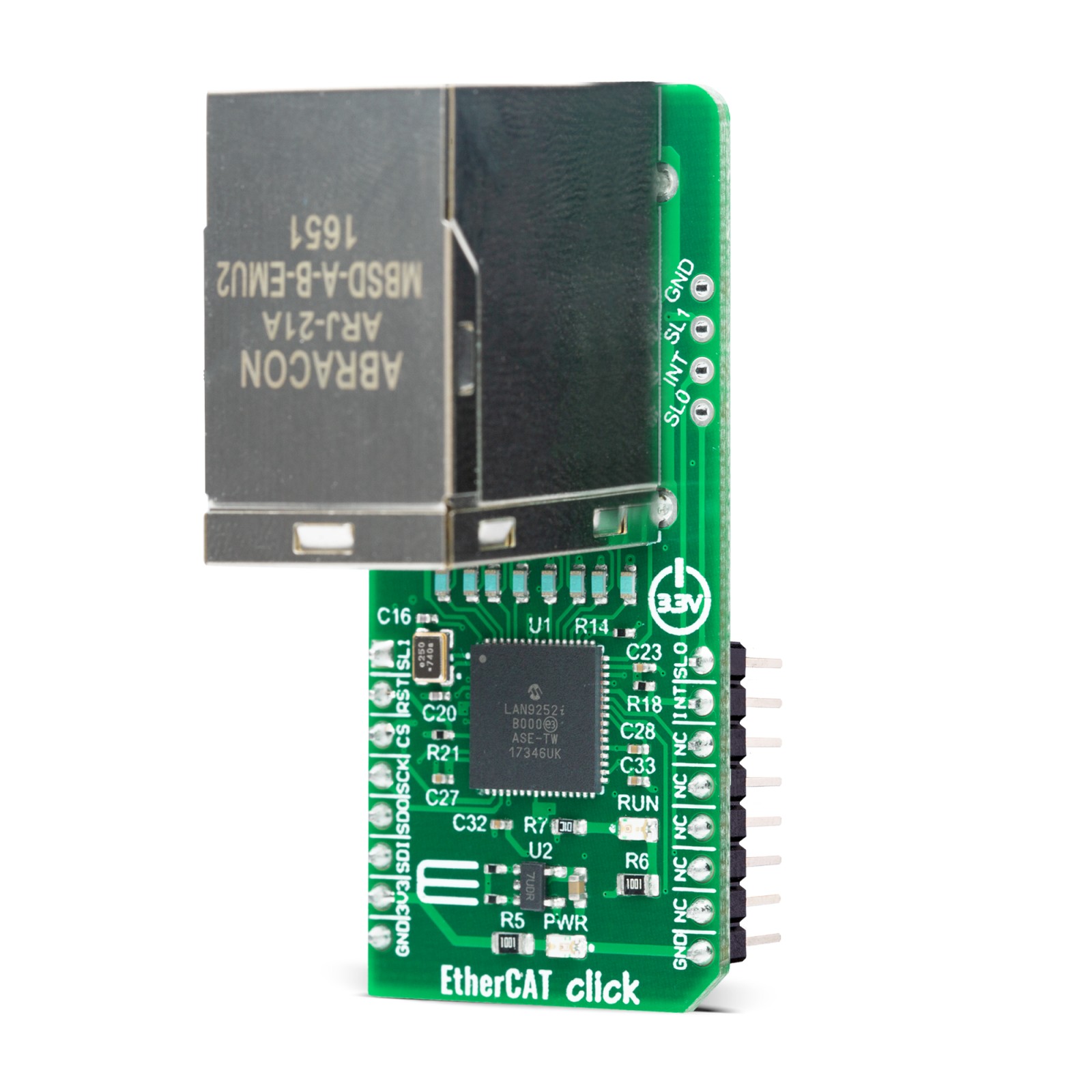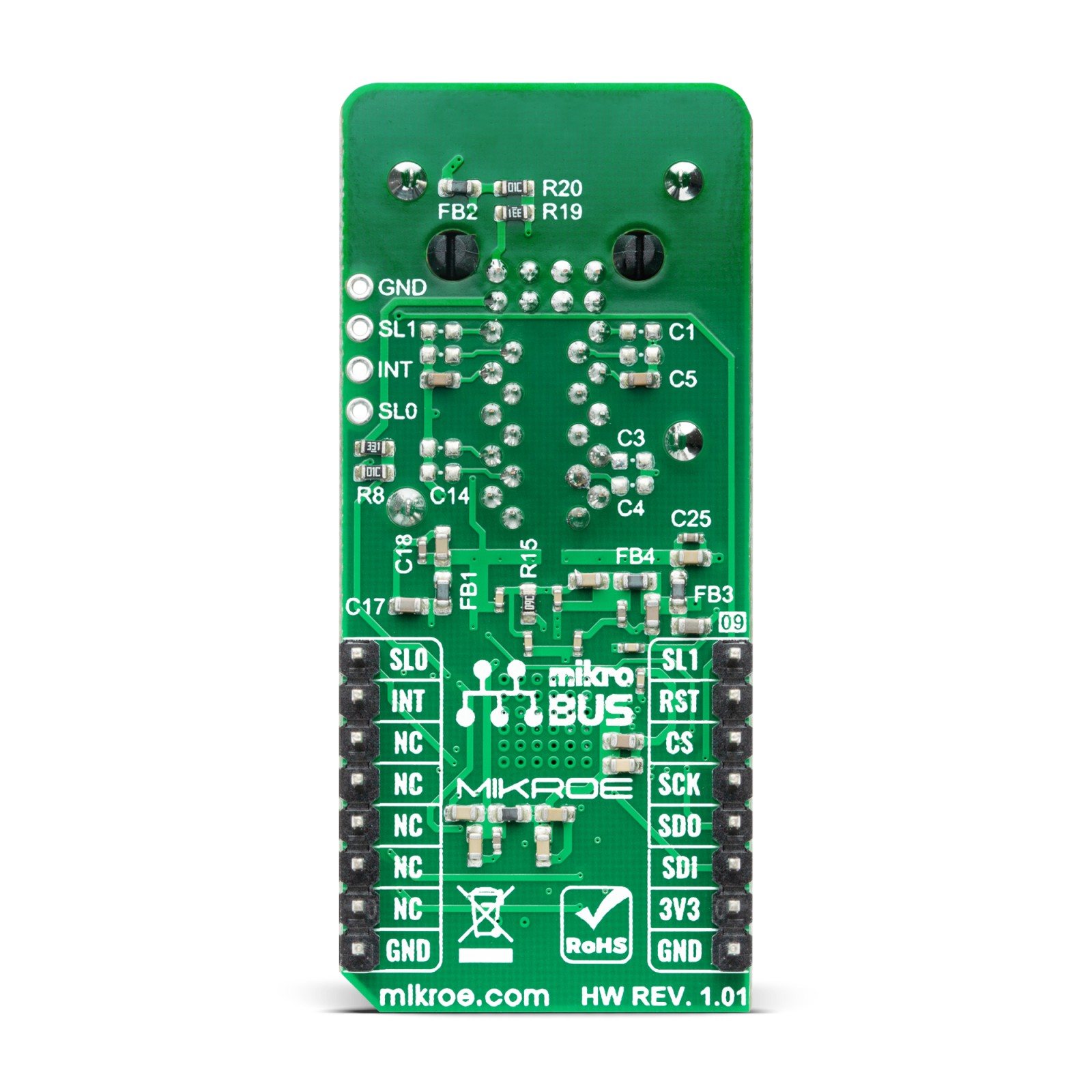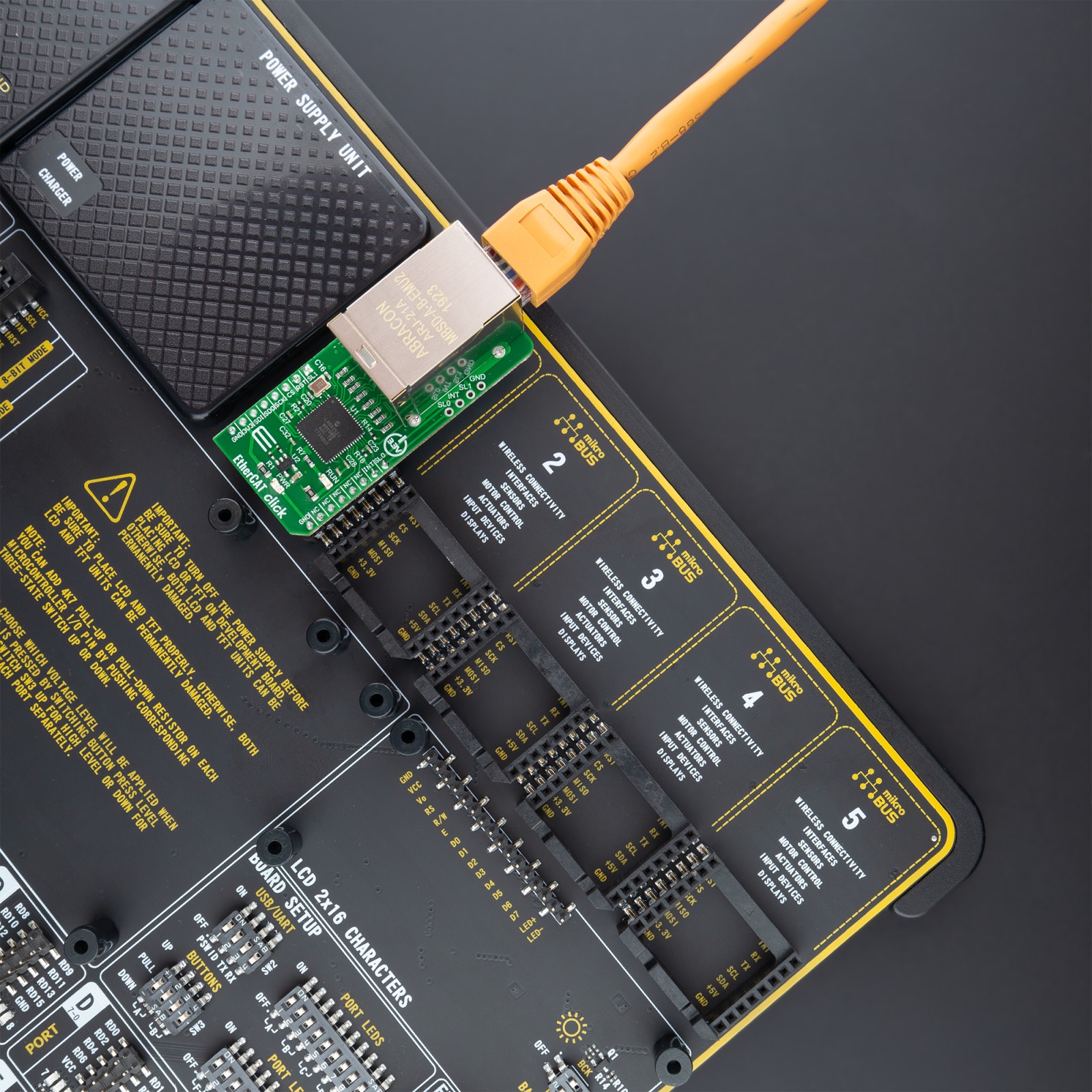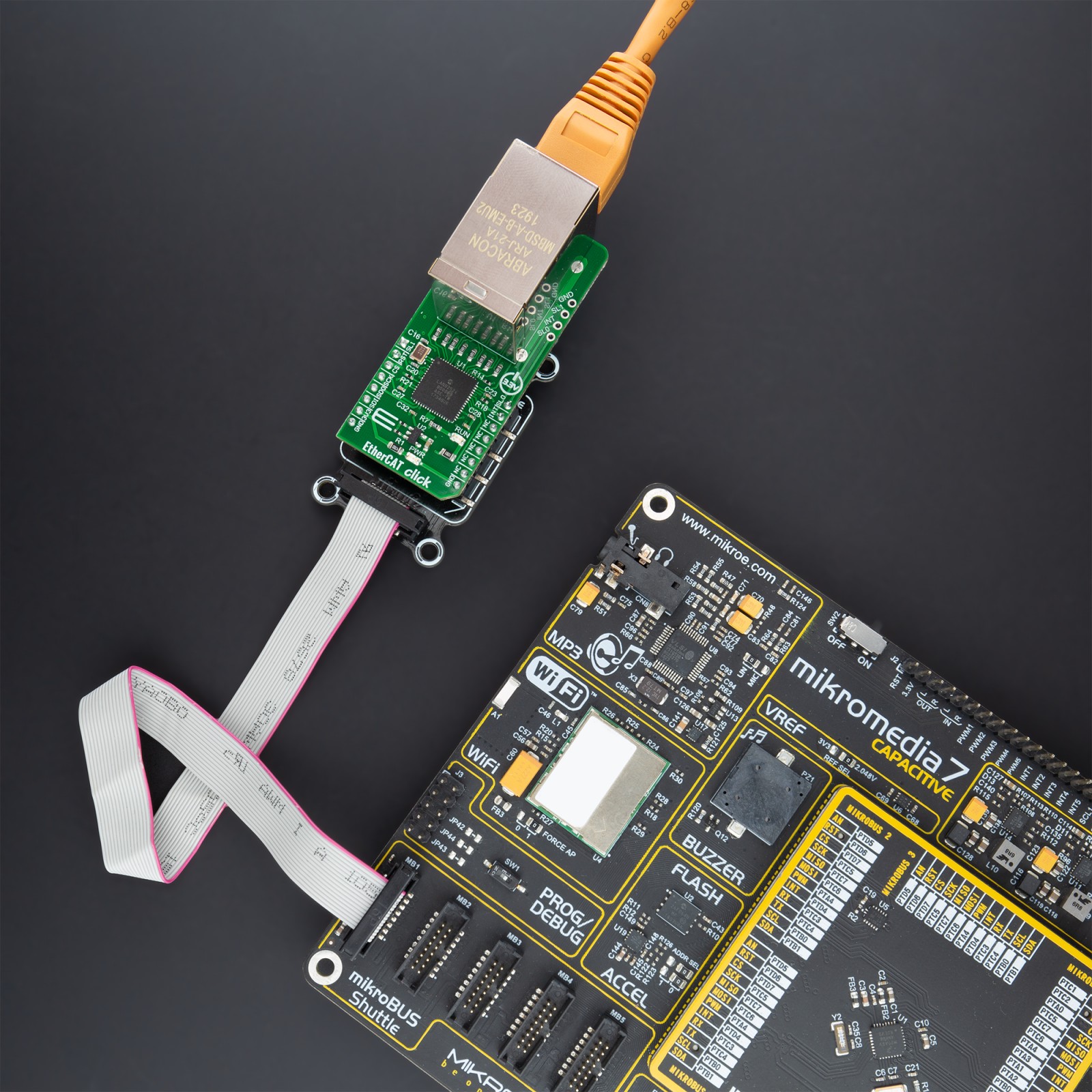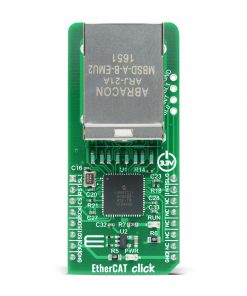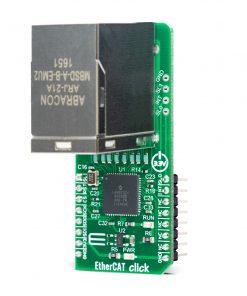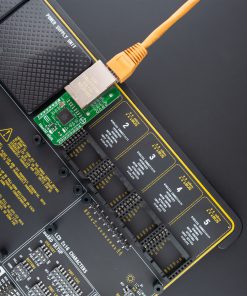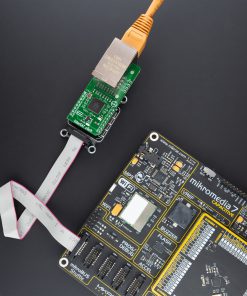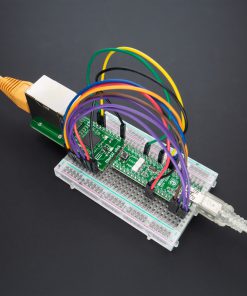EtherCAT Click is a compact add-on board that provides a cost-effective solution for realizing EtherCAT device solutions on various processors over the SPI interface. This board features the LAN9252, a 2-port EtherCAT device controller with dual integrated Ethernet PHYs from Microchip Technology. Each PHY contains a full-duplex 100BASE-TX transceiver and supports 100Mbps operation. The LAN9252 supports HP Auto-MDIX, allowing the use of direct connects or cross-over LAN cables. It communicates with MCU via a synchronous device SPI/SQI interface and can operate in Digital I/O Mode, where signals can be controlled or monitored by the EtherCAT Master. This Click board™ is suitable for industrial control, process/factory automation, hydraulic and pneumatic valve systems, power, and many more.

